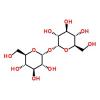Posted 01 September 2017 - 10:45 AM
Pharmacokinetic Study in Healthy Volunteers Demonstrated Trehalose to be Safe and Well Tolerated at Twice the Dose Levels Used in Prior Clinical Studies
Results Support Weight-Based Dosing Paradigm in Future Studies
TEL AVIV, Israel, Oct. 24, 2016 (GLOBE NEWSWIRE) -- Bioblast Pharma Ltd. (NasdaqGM:ORPN), a clinical-stage, orphan disease-focused biotechnology company, today announced results of a double-blind, placebo-controlled pharmacokinetic (PK) study of intravenous (IV) trehalose 90mg/mL in healthy volunteers.
The primary objective of the study was to establish safety and tolerability of escalating doses of trehalose. The secondary objectives were to determine the Maximum Tolerated Dose (MTD) and pharmacokinetics of escalating doses of trehalose.
The key findings of the study that was conducted in 24 healthy volunteers include:
The MTD was determined to be 54 grams (g) administered IV over 60 minutes, which is twice the level of drug that has been given to patients in Bioblast’s oculopharyngeal muscular dystrophy (OPMD) and spinocerebellar ataxia (SCA3) Phase 2a studies.
54g of trehalose administered over one hour was generally safe and well tolerated with no changes in any safety parameters.
The PK of trehalose was linear; i.e. doubling the dose, doubled the exposure.
The half-life of trehalose was approximately 1.5 hours and did not change when the dose was increased.
There was no effect on serum glucose levels during or following the infusion.
The rate of trehalose clearance from the blood was directly related to the patient’s weight; i.e., the greater the weight the faster the clearance of drug.
“Based on the findings from this study, trehalose appears to be generally safe and well tolerated at twice the dose levels used in the previous clinical studies,” said Warren Wasiewski, MD, Bioblast’s Chief Medical Officer. “Since total clearance of the drug increased with weight, we plan to utilize a weight-based dosing paradigm moving forward. This will enable us to achieve a consistent serum concentration of trehalose in all patients regardless of weight in the upcoming double-blind, placebo-controlled Phase 2b study in patients with OPMD.”
More on the PK trial
This was a randomized double-blind, placebo-controlled single ascending dose study that included 3 groups of subjects, 8 in each group. In each group, 6 subjects received trehalose and 2 received placebo. The first group received 27g of IV trehalose as a one hour infusion. The safety and pharmacokinetic assessment of the data showed that trehalose was well tolerated and no safety signals were identified. The next group was then dosed with 54g. Safety and PK were acceptable permitting dosing of the next level of 81g.
Peak serum concentration increased with increasing doses from 27g to 81g. The mean elimination half-life (t½) ranged from 1.41 hours to 1.59 hours and was consistent as the dose increased. In the 81g dose cohort, one subject out of six had an increase in liver enzymes that resolved without treatment; no higher doses of trehalose were administered, thereby establishing the MTD for trehalose as 54g.
There was a positive relationship between clearance of trehalose from the blood and body weight over a range of 50 kilograms (kg) to 100kg. This finding suggested that clearance is related to body size and thus, weight-based dosing, i.e. g/kg, would be more appropriate to achieve consistent exposure across a range of body weights in future studies.
Trehalose is a protein stabilizer that also activates autophagy and crosses the blood-brain barrier
Trehalose is a low molecular weight disaccharide (.342 kilodaltons) that protects against pathological processes in cells. It has been shown to penetrate muscle cells and cross the blood-brain barrier. In animal models of several diseases associated with abnormal cellular-protein aggregation, it has been shown to reduce pathological aggregation of misfolded proteins as well as to activate autophagy pathways through the activation of Transcription Factor EB (TFEB), a key factor in lysosomal and autophagy gene expression. Activation of TFEB is an emerging therapeutic target for a number of diseases with pathologic accumulation of storage material.
Trehalose 90mg/mL IV solution is being developed as a treatment for OPMD based on several studies in cell and animal models of OPMD where it demonstrated the ability to reduce aggregation of the pathological protein (PABPN1) in muscle cells, the hallmark of the disease, by stabilizing the protein, reducing the formation of protein aggregations, and promoting clearance of abnormal proteins through activation of autophagy, thereby preventing muscle cell death.
Other information on trehalose in clinical studies
In a Phase 2a open label study of patients with OPMD, trehalose administered as a weekly infusion of 27g for 6 months showed an improvement in dysphagia as measured by the time to consume 80mL of cold water. In the 12 month follow up of that study designed as a withdrawal study, those patients who were randomized to stay on drug continued to have reduced drinking time and those who were withdrawn from drug had an increase in the drinking time. These data suggest that the treatment effect is sustained in the those who continue to receive trehalose and was lost in those who were withdrawn from treatment.
Beyond OPMD, Bioblast is currently conducting analyses to determine the next orphan disease that will investigate the use of trehalose as a therapeutic agent. Bioblast intends to make such a decision in the first half of 2017.
About OPMD
OPMD is an inherited myopathy characterized by dysphagia (difficulty in swallowing), eyelid drooping (ptosis), and the loss of muscle strength, with progressive limb weakness. Symptoms generally appear in mid-life and get worse over time. As the dysphagia becomes more severe, patients may become malnourished, may lose significant weight, and may suffer from repeated incidents of aspiration pneumonia. The disease is caused by a genetic mutation responsible for the creation of a mutant protein (PABPN1) with an expanded polyalanine domain that aggregates within patient muscle cells. There is currently no approved pharmacologic treatment for OPMD.
About Bioblast Pharma Ltd.
Bioblast Pharma is a clinical-stage biotechnology company committed to developing clinically meaningful therapies for patients with rare and ultra-rare genetic diseases, with a lead drug candidate -- trehalose 90mg/mL IV solution -- in Phase 2 development. Bioblast was founded in 2012 and is traded on the NASDAQ under the symbol “ORPN”. For more information, please visit our website, www.bioblastpharma.com, the content of which is not incorporated herein by reference.
-
 Informative x 2
Informative x 2
![]()

















































